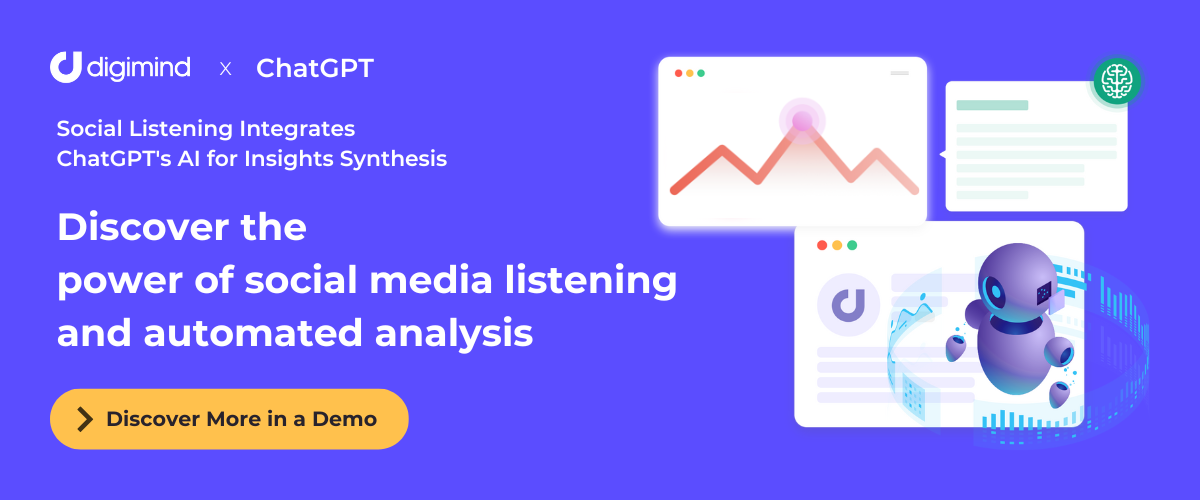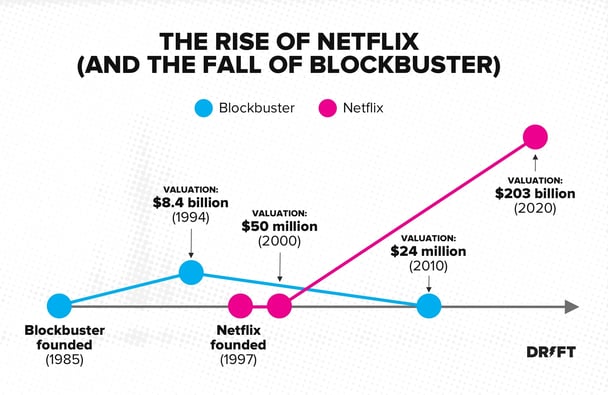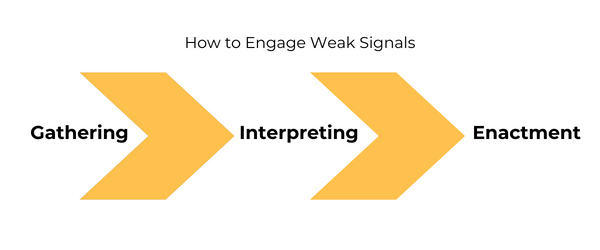Beyond Hindsight and Luck: Predict Trends and Anticipate Change With Weak Signals
"We favor the visible, the embedded, the personal, the narrated and the tangible; we scorn the abstract"— Nassim Nicholas Taleb, author of “The Black Swan: The Impact of the Highly Improbable.”
In more recent times, multiple instances of “Black Swan” events, with hindsight, can be said to have been preventable. For example, consider the rise of social media and its impacts on politics. In the early days of social media, there were weak signals in social media that potentially influenced political campaigns and public opinion. Such events include foreign interference and the storming of the US Capitol Building in 2021.
Based on the mistaken belief that black swans did not exist, the “Black Swan” theory is a metaphor that describes an event that comes as a surprise, has a significant effect, and is often inappropriately rationalized after the fact. Those weak signals that contributed to black swan events were not widely recognized or acted upon, and social media grew in power, eventually leading to black swan events.
The black swan theory has important implications for decision-making and risk management, suggesting that unforeseeable events could have a significant industry-wide impact on businesses. By being aware of this concept, individuals and organizations can prepare to be more resilient in the face of unexpected events and disruptions.
To mitigate, prevent or even capitalize on the impacts of black swan events, brands must keep a pulse on top of and be attuned to weak signals on social media.
Weak Signals: Are They Predictors of Change?
Just like “hardly discernible tracks anticipating an earthquake,” weak signals are subtle, early indicators of emerging trends or changes in the fringes of public opinion. As people fail to recognize weak signals at first glance, they can eventually gain momentum and lead to significant disruption.
Weak signals reveal potential issues impacting your business practices, operations, or industry landscape. Weak signals underline opportunities for businesses to respond to when one looks beyond existing knowledge and immediate business activities and considers the peripheral, adjacent areas for improvement.
Admittedly, weak signals hiding in social media are not easily discernible through traditional methods of observation and analysis and may require a different perspective to recognize. Only by running a fine-tooth comb through hundreds of conversations can we form a mosaic from pieces of information on social media.
Detecting weak signals requires a more nuanced and holistic approach to analysis, considering the complexity and noise in your data. These weak signals tend not to be noticed, disregarded, or misunderstood despite their impact, possibly due to the lack of awareness, biases, or preliminary analysis. As such, weak signals lead to missed opportunities or failure to anticipate potential risks, resulting in a black swan event.
Winners and Losers: How Brands Reacted to Weak Signals
Netflix: Dealing with Vulnerabilities Ahead of Time
In the early 2000s, Blockbuster was the dominant player in the video rental industry, with thousands of stores across the United States. However, Netflix was a small startup that offered DVD rentals by mail, a new and unconventional concept at the time.
Although Netflix had only a fraction of the market share of Blockbuster, it recognized a weak signal: the increasing popularity of the internet and streaming technology. Netflix invested in developing its online streaming platform, allowing customers to watch movies and TV shows instantly on their devices without waiting for DVDs to arrive in the mail.
On the other hand, Blockbuster did not recognize the weak signal. Instead, it focused on its brick-and-mortar stores, incurring high costs for real estate and overhead. As a result, when streaming became the dominant form of media consumption, Blockbuster could not adapt quickly enough and filed for bankruptcy in 2010. Meanwhile, Netflix became the dominant player in the industry, with over 200 million subscribers worldwide.
In this case, Netflix's recognition of the weak signal and its proactive response allowed it to deal with the vulnerability of the traditional video rental industry well in advance. In contrast, Blockbuster's failure to recognize the weak signal made it vulnerable to disruption.
COVID-19: Hindsight; Was It So Surprising?
For decades, virologists have warned about the emergence of zoonotic diseases that can affect humans, such as the SARS virus that originated from bats and the swine flu from pigs. The recent outbreak of an epidemic from a wet market selling live animals has been identified as a significant risk factor, with mass tourism, urbanization, and population growth expediting the speed and intensity of the virus being spread across the globe.
In this context, the recent epidemic that originated in a wet market selling live animals was, in a sense, somewhat predictable. However, these kinds of warnings are often overlooked and disregarded, despite the weak signals subtly hinting about future changes that are currently present but are easily missed. COVID-19 led to an unprecedented shutdown of many labor markets, with over 225 million jobs lost worldwide since 2020, with brands forced to restructure their workforce or close for good.
Nordstrom: A Competitive Advantage
A specific example is the case of Nordstrom. This US retailer used weak signals from social media to detect an emerging opportunity on the digital-scrapbooking site Pinterest. The company noticed that its products generated significant interest on Pinterest, with more than four million followers.
Nordstrom began displaying popular Pinterest items in two of its Seattle-area stores to capitalize on this online engagement. When early results were encouraging, the retailer rolled out the test more broadly. The retailer also developed an in-store app for its salespeople to match items popular on Pinterest with objects in its inventory. This level of proactivity allowed Nordstrom to leverage the weak signal from Pinterest and create a new sales channel, generating tangible results.
By being attuned to weak signals, Nordstrom was able to spot an emerging opportunity and take action well in advance.
Mastering the Art of Engaging Weak Signals
Gathering Signals
Firstly, businesses must actively gather signals from various sources, including social media monitoring and discussions, while noting anomalies or observations. This step requires continued observation and tracking of specific keywords to identify potential weak signals.
Interpret Signals
Secondly, a dedicated professional in your organization must interpret these signals accurately. This step involves careful evaluation of the context behind the data and the interactions between different voices, considering multiple perspectives. In addition, identifying emerging patterns and trends could indicate potential future developments for your business.
Signal Enactment
Finally, businesses must enact these signals by categorizing them and looking for ways to develop them further. This step may involve brainstorming new products or services that companies and brands could develop based on these signals or exploring new markets and potential partnerships.
Next Steps in Embracing Weak Signals
"Risk management and safety enhancement can fare much better if a weak signal can be identified at the right stage. It is easier to take corrective measures in the early stages"
Aalto University Professor of Systems Analysis Ahti Salo
For businesses to stay competitive in the long term, they should not just react to recent changes but also take a proactive approach. This approach involves spotting weak signals, responding to them, and making strategic adjustments as quickly as possible. It is crucial to monitor the evolution of these weak signals and understand their connections and broader shifts. However, manually sifting data through numerous news articles, social media sources, and competitor activities to identify weak signals can be tedious. To expedite the identification process, marketing and strategy teams can use Digimind’s Social Listening software to accelerate the identification process to scout, scan, monitor, and streamline the process.
Social listening involves tracking and analyzing online conversations, mentions, and feedback on various social media platforms and web sources. This technology enables companies to keep track of customer needs, preferences, and opinions in real-time, providing a continuous stream of insights that can help businesses identify weak signals and respond accordingly.
Digimind's AI-driven software analyzes social media data to identify patterns, trends, and emerging issues that may not be immediately visible to the human eye. By using natural language processing (NLP), sentiment analysis, and topic clustering, Digimind can help businesses make sense of their online landscape, identify potential weak signals, and take a proactive approach to remain relevant in their industry.
Your Dream Insights Assistant is ChatGPT Powered


